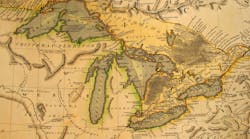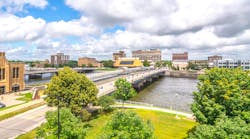Welcome to the November edition of Stormwater magazine. So much has happened in the last few months, including the return to an in-person StormCon in Milwaukee. The program stated out with a bang, thanks to major thunderstorms in the area the night before the official proceedings began. It was a perfect way to welcome back attendees and exhibitors for the first in person program since 2019. With 440 registrants from 42 states in attendance, the program was smaller than in years past due to ongoing effects of the pandemic. However, in a post-show survey to attendees, 90 percent of respondents would consider recommending StormCon to their colleagues. Additionally, 94 percent rated the quality of the speakers as Good, Very Good or Exceptional; 72 percent of attendees rated the quality of the Conference Program as Good, Very Good or Exceptional; and 86 percent of attendees rated the quality of exhibitors as Good, Very Good or Exceptional. The theme of this year’s program, it seems was quality.
Having not seen many of our clients, friends, and coworkers for over a year, it was hard not to hug someone or come close to shake their hand. Stickers on our badges denoted the level of comfort attendees and exhibitors had with greetings –a hug, handshake, or fist bump, for instance – but even those with a red sticker (no contact, please) were hugging their colleagues by the end of the event. The industry was glad to be back, and you could feel the energy throughout the event. Even with masks on, you could see the smiles in the eyes of people on the exhibit floor and in conference sessions.
In this month’s cover story, we examine hydroseeding as an economical approach to erosion control, by looking at a series of recent railway projects in California. The San Diego Association of Governments (SANDAG) needed to add additional tracks to the railway to accommodate for growth in the second busiest intercity passenger rail corridor in the nation, the LOSSAN Corridor. Revegetation efforts along the newly constructed railways included hydraulically applied products made from recycled wood. Read more on page 10.
On page 14, learn about how scientists at Chesapeake Biological Laboratory use an online platform to manage, host and workup data on salinity, water temperature, and animal presence in the area to preserve the coastal area for future generations to enjoy. On page 16, our own Jeremy Wolfe discusses the municipal bond structure that catapulted green infrastructure projects across the nation, including one awarded to the Buffalo Sewer Authority worth $54 million — the country’s largest to date at the time of the award.
We have two exciting project profiles to share in this issue. On page 28, read about the replacement of outdated stormwater infrastructure that discharged untreated runoff directly into a lake in Lake Carasaljo Park in Lakewood, N.J.; and the transformation of an abandoned residential neighborhood into a commercial district in College Park, Ga. On page 30, learn about how a Washington-based foundry, seeking to reduce copper in its stormwater to comply with its stormwater permit, turned to peat-based filtration for a natural solution.
One final note: as we transition into the winter months and the holiday season, here at Stormwater, we are thankful that our readers are so invested in the work they do. Thank you for sticking with us through the last year’s uncertainties and challenges as we continue to shine a light on the good work of stormwater professionals across the country – in our magazine and at our shows. Be well, and thanks for reading. SW






